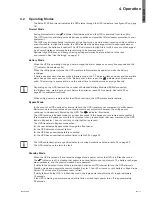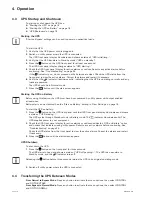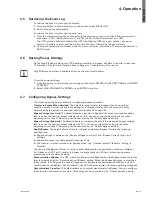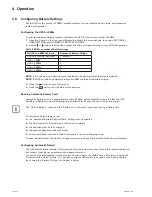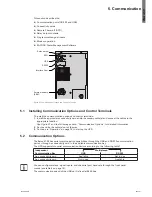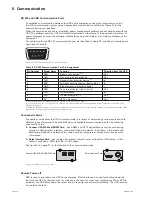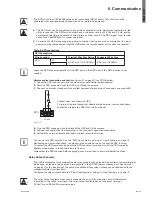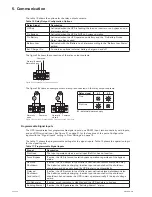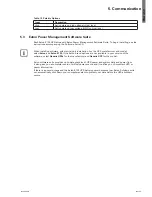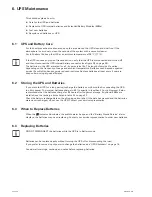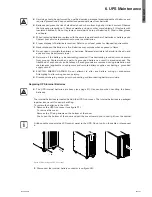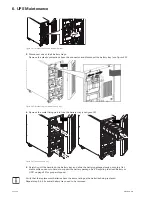
Page 13
9130 UPS-EN
ENGLISH
3. Power cables connection & Startup
3.5
UPS Initial Startup
To start up the UPS:
Verify that the total equipment ratings do not exceed the UPS capacity to prevent an overload
alarm.
1.
Verify that the internal batteries are connected.
See "Connecting the internal battery" on page 7.
2.
If optional EBMs are installed, verify that the EBMs are connected to the UPS.
See "Connecting the EBM(s)" on page 8.
3.
Set the upstream circuit breaker (not included) to the "I" position (ON).
The UPS front panel display illuminates and shows a status of "UPS initializing..."
4.
Verify that the UPS transfers to Standby mode ("UPS on standby").
5.
Press the
button on the UPS front panel for at least one second.
The UPS front panel display changes status to "UPS starting..."
6.
Check the UPS front panel display for active alarms or notices. Resolve any active alarms before
continuing. See "Troubleshooting" on page 34.
If the
indicator is on, do not proceed until all alarms are clear. Check the UPS status from the
front panel to view the active alarms. Correct the alarms and restart if necessary.
7.
Verify that the
indicator illuminates solid, indicating that the UPS is operating normally and any
loads are powered.
The UPS should be in Normal mode.
8.
Press the
ESC
button until the start screen appears.
9.
If optional EBMs are installed, see "Configuring the UPS for EBMs" on page 20 to set the number of
installed EBMs.
10.
To change any other factory-set defaults, see "Operation" on page 14.
If you are powering RCD type loads, with high inrush current, it is possible to first start on
bypass:
1.
In standby mode, enable the user setting “Start on Bypass” (disabled by default).
2.
Press the on button to start the UPS. The UPS will start on Bypass for 5~15 seconds, and then
transfer automatically to Normal mode.
Eaton recommends setting the date and time.
At initial startup, the UPS sets system frequency according to input line frequency (input
frequency auto-sensing is enabled by default). After initial startup, auto-sensing is disabled
until manually re-enabled by output frequency setting.
At initial startup, input voltage auto-sensing is disabled by default. When manually enabled
by output voltage setting, at the next AC startup the UPS sets output voltage according to
input line voltage. After the subsequent startup, auto-sensing is disabled until manually
re-enabled by output voltage setting.
11.
If you installed an optional RPO, test the RPO function:
Activate the external RPO switch. Verify the status change on the UPS display.
Deactivate the external RPO switch and restart the UPS.
The internal batteries charge to 90 % capacity in less than 3 hours. However, Eaton
recommends that the batteries charge for 48 hours after installation or long-term storage. If
optional EBMs are installed, see the recharge times listed in table 24 on page 33.

















